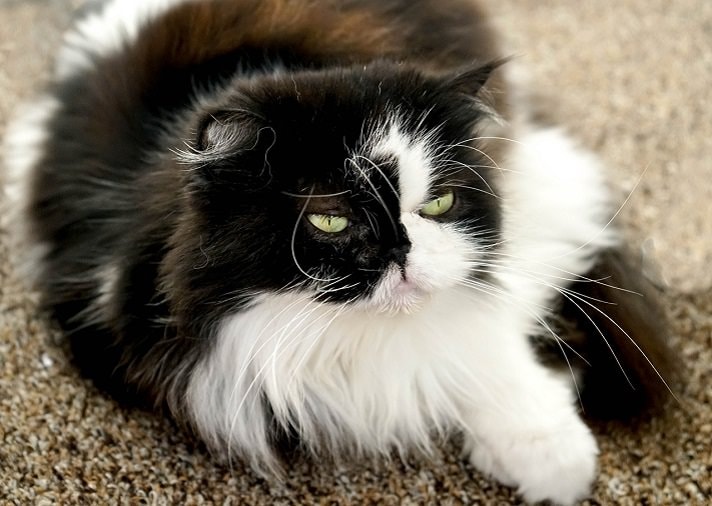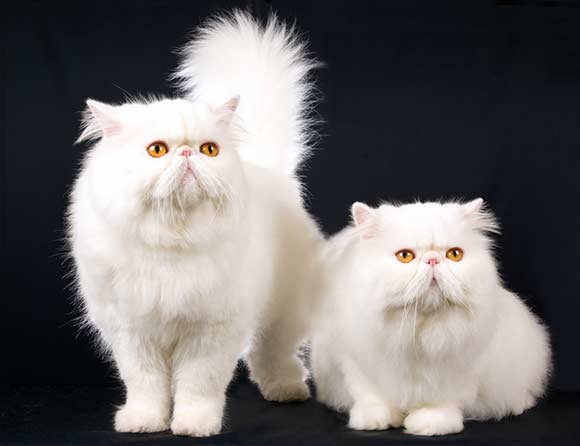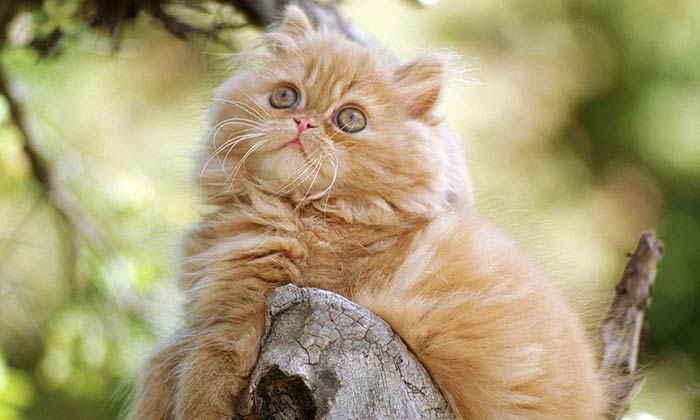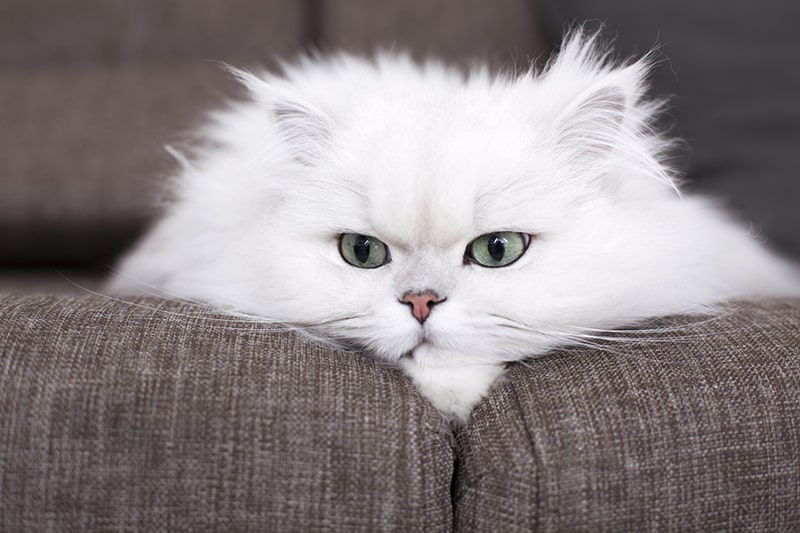Are you a fan of Persian cats? Do you want to learn more about their behavior and understand what makes them unique? Well, you’ve come to the right place! In this article, we’ll dive into the fascinating world of Persian cats and explore their behavior in detail. Whether you’re a proud owner of a Persian cat or simply curious about these beautiful felines, you’ll find valuable information that will deepen your understanding and appreciation for these furry companions. So, get ready to learn more about the behavior of Persian cats and gain some insights that will make you a true Persian cat expert!
We all know that cats have their own distinct personality and quirks, and Persian cats are no exception. Their serene and laid-back demeanor makes them a beloved choice for many cat lovers. But have you ever wondered why they behave the way they do? Throughout this article, we’ll explore various aspects of Persian cat behavior, including their social nature, grooming habits, and how they interact with their environment. Whether you’re interested in their playful side, their independent nature, or their love for cuddling, we’ll cover it all! So stick around and keep reading to uncover the secrets behind the behavior of Persian cats.
But wait, there’s more! In addition to providing you with a comprehensive understanding of Persian cat behavior, we’ll also be adding a special section to each post where we answer the top 10 most common questions people have about Persian cats. This way, you’ll not only gain valuable knowledge but also be equipped with the answers to satisfy your curiosity and that of others. Our goal is to make sure you have all the information you need to better understand these majestic creatures. So, let’s embark on this fascinating journey into the behavior of Persian cats together!

Understanding the Behavior of Persian Cats
Characteristics of Persian Cats
Persian cats are known for their distinctive physical appearance, beautiful long hair, and sweet temperament. Let’s explore the key characteristics of Persian cats in more detail.
Physical Appearance
One of the most notable features of Persian cats is their luxurious, long, and dense coat. Their fluffy fur requires regular grooming to keep it healthy and free from tangles. Persian cats have a round face, with large round eyes that can be various shades of blue, copper, or green. Their small, snubbed nose and full cheeks give them an adorable teddy bear-like appearance.
Temperament and Personality
Persian cats have a calm and gentle personality, making them excellent companions for both individuals and families. They are known for their laid-back nature and love to spend their days lounging around the house. Persian cats enjoy a serene environment and are not particularly fond of noisy or chaotic spaces.
These cats are affectionate and enjoy being near their human companions. They often seek out their owner’s attention and can become quite attached. Persian cats are not usually very active and prefer a relaxed and peaceful lifestyle.
Grooming Needs
Due to their long and dense fur, Persian cats require regular grooming to keep their coats in top condition. Daily brushing is necessary to prevent matting and tangling. Special attention should be given to grooming the hair around their hindquarters and under the tail to avoid hygiene issues.
Bathing is also required occasionally to keep the cat clean, but it should be done with caution to avoid stressing them out. Trimming their nails and cleaning their ears should be a part of their regular grooming routine as well.
Different Types of Persian Cats
Persian cats come in various types, each with its own distinct characteristics and features. Let’s explore the different types of Persian cats.
Traditional Persian Cats
Traditional Persian cats, also known as doll-faced Persians, have a more natural and less extreme facial structure compared to other types. They have a slightly longer nose and a less pronounced flat face, giving them a more traditional look. These cats have a more moderate body structure, with a broader chest and a longer torso.
Exotic Shorthair Persian Cats
Exotic Shorthair Persian cats are similar in appearance to Persian cats, but with shorter fur. They were developed by crossbreeding Persians with American Shorthairs to create a cat with a Persian-like appearance but easier grooming needs. These cats have a compact body, round face, and large, expressive eyes.
Himalayan Persian Cats
Himalayan Persian cats, also known as Colorpoint Persians, are a crossbreed between Persians and Siamese cats. They have the same body structure and luxurious coat as Persians but inherit the pointed color pattern of Siamese cats. Himalayan Persians have striking blue eyes and a colorpoint pattern on their ears, face, paws, and tail.

History and Origin of Persian Cats
The history of Persian cats dates back centuries, and they have a rich and fascinating origin. Let’s delve into the history and development of Persian cats.
Ancient Beginnings
Persian cats are believed to have originated in ancient Persia, which is modern-day Iran. They were highly regarded by royalty and nobility in ancient Persia and were often depicted in artworks and manuscripts. These cats were considered a symbol of luxury and prosperity.
Introduction to Europe
Persian cats were introduced to Europe in the 17th century through various trading routes. They quickly gained popularity among European aristocracy and became a prized possession. The English nobility further refined the breed and played a significant role in establishing the modern Persian cat.
Development of the Persian Breed
The Persian breed underwent further development during the late 19th and early 20th centuries, with breeders focusing on enhancing the breed’s physical features. Selective breeding resulted in the distinct traits we associate with Persian cats today, such as their round face, long coat, and gentle temperament.
Understanding Persian Cat Breeding
Breeding Persian cats requires careful consideration of certain standards, genetics, and potential challenges. Let’s explore the aspects of Persian cat breeding.
Breeding Standards
Breeders follow specific standards set by cat associations and clubs to ensure the purity and quality of Persian cats. These standards include guidelines for physical appearance, coat texture and length, eye color, and overall structure.
Breeders aim to produce kittens that conform to these standards while maintaining the breed’s health and temperament. Responsible breeders prioritize the well-being of the cats and aim to avoid any potential health or genetic issues associated with inbreeding.
Genetics and Inheritance
Persian cat breeding involves understanding the principles of genetics and inheritance. Breeders focus on desirable traits and work to selectively breed cats with those traits. This process involves studying the genetic history of the cats and considering the potential variations and outcomes of various pairings.
However, it is crucial to keep in mind that breeding for certain physical traits, such as the extremely flat face seen in some Persian cats, can increase the risk of health issues. Responsible breeders prioritize the health and well-being of their cats and work towards maintaining a balance between desirable traits and overall health.
Breeding Challenges
Breeding Persian cats can come with its share of challenges. The breed’s long coat requires extensive grooming and maintenance, and some cats may be more prone to certain health issues. Breeders need to carefully select mating pairs to minimize the risk of inherited health problems and ensure the longevity and well-being of the breed.

Health Issues and Care for Persian Cats
While Persian cats are generally healthy, they are predisposed to certain health conditions that owners should be aware of. Let’s explore some common health problems and how to care for Persian cats.
Common Health Problems
Persian cats are prone to several health issues, including:
- Polycystic Kidney Disease (PKD): A genetic condition characterized by the growth of cysts in the kidneys.
- Respiratory Problems: Due to their flat faces, Persian cats may experience breathing difficulties or develop upper respiratory infections.
- Eye Problems: Persians are prone to eye conditions such as cherry eye, entropion, and progressive retinal atrophy.
- Dental Issues: Their facial structure can lead to dental problems, so regular dental care is essential.
- Heat Sensitivity: Persian cats are sensitive to extreme temperatures, particularly heat. They should be kept in cool environments.
It is crucial to schedule regular vet check-ups for your Persian cat to catch any potential health issues early on. Vaccinations, parasite prevention, and dental cleanings should also be a part of their healthcare routine.
Diet and Nutrition
Proper nutrition is essential for the overall health and well-being of Persian cats. A balanced diet that meets their unique needs is necessary to maintain their luxurious coat, support their immune system, and prevent weight-related issues.
Consult with your veterinarian to determine the most suitable diet for your Persian cat, considering factors such as their age, activity level, and any specific dietary requirements they may have.
Regular Vet Check-ups
Regular vet check-ups are crucial in monitoring the health of your Persian cat and addressing any potential issues early on. During these check-ups, your vet will conduct a thorough physical examination, check for any signs of health problems, and administer any necessary vaccinations or treatments.
Be sure to discuss any concerns or observations you have regarding your cat’s health or behavior with your veterinarian to ensure they receive the appropriate care.
Living and Housing Persian Cats
Providing a suitable living environment for Persian cats is essential for their well-being and happiness. Let’s explore some considerations for living and housing Persian cats.
Indoor vs. Outdoor Living
Persian cats are best suited for indoor living. Their long, flowing coats require protection from outdoor elements, and their calm and gentle nature makes them less inclined to roam or explore outside. Indoor living also helps ensure their safety by protecting them from potential dangers, such as traffic or aggressive animals.
However, if you have a secure outdoor space, such as a screened-in enclosure or a cat-proofed garden, your Persian cat may enjoy supervised outdoor time.
Creating a Safe Environment
Creating a safe environment is crucial to ensuring the well-being of your Persian cat. Persian cats can be curious and may be prone to accidents if their environment is not adequately secured. Consider the following measures to keep them safe:
-
Remove toxic plants: Some plants can be poisonous to cats. Ensure that your home is free from any potentially harmful plants.
-
Secure windows and balconies: Make sure windows and balconies are securely screened or have protective measures to prevent accidental falls or escapes.
-
Provide scratching posts and toys: Persian cats enjoy scratching and playing. Providing appropriate toys and scratching surfaces will help satisfy their natural instincts and prevent them from damaging furniture.
-
Eliminate potential hazards: Keep small objects, household chemicals, and cables out of reach to prevent accidents.
Providing Enrichment
Despite their generally calm nature, Persian cats still need mental and physical stimulation to thrive. Providing enrichment activities and interactive toys will help prevent boredom and keep them mentally engaged.
Interactive puzzle toys, feather wands, or treat-dispensing toys are excellent options to stimulate your Persian cat’s mind and maintain their overall well-being. Spending quality time playing with and interacting with your Persian cat is also important for building a strong bond.

Training and Socializing Persian Cats
Training and socializing Persian cats from a young age can help them develop good behavior and adapt to different environments. Let’s explore some important aspects of training and socializing Persian cats.
Basic Obedience Training
Persian cats can be trained to follow basic commands, such as sit, stay, and come. Positive reinforcement techniques, such as treats and praise, work well with these cats. However, it’s important to be patient and consistent during the training process, as Persian cats may be more independent and less motivated by food rewards compared to other breeds.
Socializing with Humans and Other Pets
Socializing your Persian cat with humans and other pets is essential to ensure they feel comfortable and confident in various social situations. Introduce them to different people, including friends and family members, in a calm and positive environment.
If you have other pets, gradually introduce them to your Persian cat and monitor their interactions closely. Ensure that introductions and interactions are supervised to ensure the safety and well-being of all animals involved.
Behavioral Considerations
Persian cats have a gentle and calm nature, but they can be sensitive to changes in their environment or routines. As such, it’s important to be aware of any behavioral changes that may indicate discomfort or stress.
If you notice any unusual behaviors, such as excessive hiding, aggression, or changes in eating or grooming habits, consult with your veterinarian. They can help assess the situation and provide guidance on how to address any behavioral issues effectively.
Persian Cats in Pop Culture
Persian cats have made appearances across various forms of media, from movies to art and literature. Let’s explore how they have been portrayed in pop culture.
Persian Cats in Movies
Persian cats have been featured in movies, often depicted as elegant and sophisticated companions. One popular example is the iconic character of cat Marie from Disney’s “The Aristocats.” Marie, with her beautiful blue eyes, captured the hearts of both children and adults alike.
Persian Cats in Art
Persian cats have been a popular subject in art throughout history. Their unique appearance and regal characteristics have been captured in various paintings, sculptures, and other art forms. Artists have portrayed Persian cats in traditional Persian art, as well as in more contemporary styles.
Persian Cats in Literature
Persian cats have been mentioned in literature over the years, often associated with beauty and grace. Some famous literary works featuring Persian cats include T.S. Eliot’s poems in “Old Possum’s Book of Practical Cats” and Edgar Allan Poe’s short story “The Black Cat,” in which the protagonist has a black Persian cat.

Famous Persian Cats in History
Persian cats have also found their way into the lives of famous historical figures. Let’s explore some notable Persian cats in history.
Notable Persian Cat Breeds
Throughout history, several notable Persian cat breeds have gained recognition and popularity. Some well-known Persian cat breeds include the Chinchilla Persian, Silver Persian, and Golden Persian. These variations showcase different coat colors and patterns while maintaining the breed’s distinct physical characteristics.
Persian Cats in Royalty
Persian cats have been favored by royalty throughout history. Queen Victoria of England and Empress Josephine of France were known to be passionate about Persian cats and owned several of these regal companions. Their love for these cats played a role in further popularizing the breed.
Celebrity Persian Cats
In recent times, Persian cats have also found love and adoration from celebrities. Famous individuals such as Taylor Swift and Karl Lagerfeld have been proud owners of Persian cats, further highlighting their appeal and charm.
Showing and Competing with Persian Cats
Persian cats can be shown and compete in various cat shows around the world. Let’s explore what it takes to show and compete with Persian cats.
Cat Shows and Competitions
Cat shows provide a platform for breeders and owners to showcase their Persian cats and compete for recognition and awards. These shows typically involve various categories based on coat color, pattern, and other physical attributes.
Judging Criteria
During cat shows, judges assess each Persian cat based on specific criteria. They evaluate factors such as the cat’s overall structure, facial features, coat condition, and how well they conform to the breed standards.
Preparing and Showing a Persian Cat
Preparing a Persian cat for a cat show involves grooming their coat to perfection, ensuring they are in top physical condition, and providing a stress-free environment. Show preparation includes extensive grooming, which includes brushing and bathing to showcase the cat’s coat in its best possible state.
During the show, it is important to handle your Persian cat with care and remain calm and composed. Persians are known for their relaxed nature, but the show environment can be overwhelming for them. It is important to provide a sense of security and comfort throughout the process.
Grooming and Maintenance of Persian Cats
Grooming and maintenance are of utmost importance for Persian cats due to their long and luxurious coats. Let’s explore the grooming needs and maintenance tasks for Persian cats.
Brushing and Bathing
Persian cats require daily brushing to prevent their fur from matting and tangling. Use a stainless-steel comb or a brush specifically designed for long-haired cats to gently remove any knots or tangles. Regular brushing also helps distribute the natural oils in their coat, ensuring its health and luster.
Bathing is necessary occasionally to keep a Persian cat’s coat clean and free from dirt and oils. Use a gentle cat-specific shampoo and thoroughly rinse the coat to remove any residue. Take caution while bathing to ensure the cat remains calm and comfortable throughout the process.
Trimming Nails and Cleaning Ears
Regular nail trimming is essential to prevent the nails from becoming too long or sharp. Use cat-specific nail clippers and be careful not to trim too close to the quick, which can cause bleeding and discomfort.
Cleaning the ears of Persian cats is important to prevent wax build-up and potential infections. Use a damp cotton ball or a soft, moist cloth to gently clean the outer part of the ear. Avoid inserting anything into the ear canal to prevent injury.
Dealing with Mats and Knots
Despite regular brushing, Persian cats may still develop mats or knots in their long fur. Avoid pulling or tugging at the mats, as this can cause discomfort to the cat. Instead, use a detangling spray or powder specifically designed for cats and gently work through the mat with your fingers or a comb.
If the mat is too stubborn to remove at home, consult a professional groomer who can safely remove it without causing any harm to your cat.
Tips for Choosing and Adopting a Persian Cat
Choosing and adopting a Persian cat is an exciting decision, but it requires careful consideration. Here are some tips to help you in the process.
Finding a Reputable Breeder
When looking for a Persian cat, it is important to find a reputable breeder who prioritizes the health and well-being of their cats. Do thorough research and ask for recommendations from trusted sources. A reputable breeder will be transparent about their breeding practices, provide health certificates for their cats, and allow you to visit their facility.
Adopting from a Shelter
Another option to consider is adopting a Persian cat from a shelter or rescue organization. Many cats are in need of loving homes, and adopting a Persian cat can be a rewarding experience. Contact local shelters or rescue groups to inquire about any Persian cats available for adoption.
Considerations for First-Time Owners
If you are a first-time cat owner, it is important to consider the responsibilities and commitments associated with owning a Persian cat. Their grooming needs, potential health issues, and the need for a calm and low-stress environment should be factors to consider before bringing a Persian cat into your home.
It is also essential to dedicate time and effort to bond with your Persian cat and provide them with the love and attention they require. Persians are loving companions and enjoy being near their owners.
Myths and Misconceptions about Persian Cats
There are several myths and misconceptions surrounding Persian cats. Let’s debunk some common myths associated with these wonderful felines.
Persian Cats and Allergies
It is a common misconception that Persian cats are hypoallergenic. While their long fur may trap some allergens, such as dander, saliva, or dust, Persian cats can still trigger allergies in sensitive individuals. It is important for potential owners with allergies to spend time with Persian cats before making a decision.
Persian Cats and Intelligence
Another misconception is that Persian cats are not as intelligent as other breeds. While they may not be as active or curious as some breeds, Persian cats are intelligent in their own way. They are known for their problem-solving abilities and can be quick learners. However, their calm and gentle nature may make them appear less active or curious compared to some breeds.
Persian Cats as High-Maintenance
Persian cats are often perceived as high-maintenance due to their grooming needs. While their coat does require regular maintenance, it is only one aspect of their care. With proper grooming routines and care, Persian cats can be kept in good condition without consuming excessive time or effort.
Conclusion
Understanding the behavior of Persian cats is important for owners and enthusiasts to provide the best possible care and companionship. Persian cats possess unique physical characteristics, a gentle temperament, and grooming needs that require attention and commitment. By understanding their behavior, health needs, and preferences, we can create a loving and enriching environment for these beautiful felines.
Whether you are a first-time owner or an experienced one, Persian cats undoubtedly leave a lasting impression with their elegance and charm. By providing them with a safe and nurturing environment, fulfilling their grooming needs, and nurturing their social and emotional well-being, you can enjoy a fulfilling and enriching journey with your Persian cat.
10 Common Questions and Answers about Persian Cats:
- Can Persian cats live in apartments?
Yes, Persian cats can adapt well to apartment living. However, it is important to provide them with enough space to move around and ensure they have access to scratching posts and toys for mental stimulation.
- Do Persian cats get along with other pets?
Persian cats can generally get along well with other pets if properly introduced and socialized from a young age. It is important to monitor their interactions and provide a safe and calm environment for all animals involved.
- Do Persian cats shed a lot?
Persian cats have long fur and are prone to shedding. Regular brushing helps prevent excessive shedding and keeps their coat healthy and free from mats and tangles.
- Are Persian cats good with children?
Persian cats can be good with children, but it is important to supervise their interactions. Teach children to be gentle and respectful towards the cat, and ensure the cat has a safe space to retreat to if needed.
- How often should I groom my Persian cat?
Daily grooming is recommended for Persian cats to prevent mats and tangles. Regular brushing, occasional bathing, and keeping their ears and nails clean are all part of their grooming routine.
- Are Persian cats prone to health issues?
Persian cats are prone to certain health issues such as polycystic kidney disease, respiratory problems, eye conditions, and dental issues. Regular vet check-ups and proper care can help prevent or manage these health issues.
- Can Persian cats be left alone for long hours?
Persian cats are generally calm and independent, but they do enjoy companionship. Leaving them alone for long hours on a regular basis can lead to loneliness and boredom. It is important to provide them with mental stimulation and quality time when you are home.
- What is the average lifespan of a Persian cat?
The average lifespan of a Persian cat is around 12 to 16 years, although some cats can live even longer with proper care.
- Do Persian cats require a specific type of diet?
Persian cats require a balanced diet that meets their nutritional needs. Consult with your veterinarian to determine the most appropriate diet for your Persian cat’s age, activity level, and any specific dietary requirements they may have.
- Are Persian cats high-maintenance?
Persian cats do require regular grooming and care, particularly for their long coat. However, with a proper grooming routine and care, Persian cats can be kept in good condition without consuming excessive time or effort.